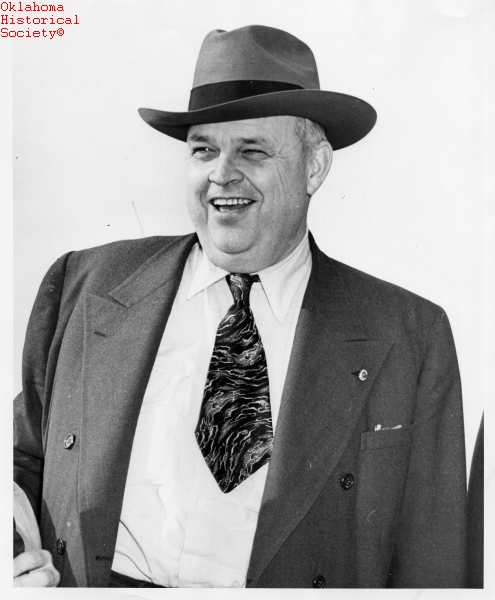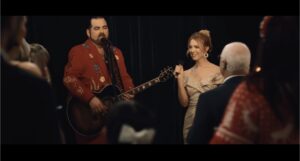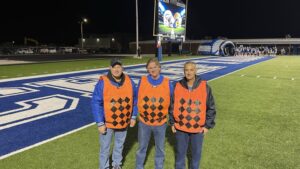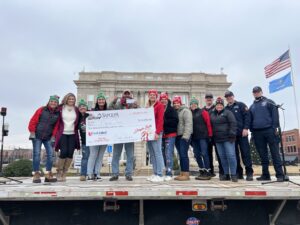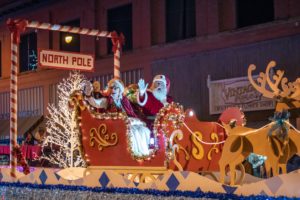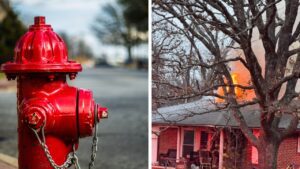
There are four famous Charles Banks Wilson paintings in the rotunda of the Oklahoma Capitol that capture native son greatness. They are of Will Rogers, Jim Thorpe, Sequoya and Robert Samuel Kerr. The story of Robert S. Kerr is a genuine rags to riches one, and that of true Oklahoman. When seeking election to political office Kerr would say, “I’m just like you, except I struck oil.”
The story of Senator Kerr as written by Sapulpa’s very own Malvina Stephenson, “King of the Senate,” is must reading for every Oklahoman.
Kerr was born in a log cabin in Pontotoc County near what is now Ada in Indian Territory to Samuel Kerr, a farmer, clerk, and politician, and Margaret Eloda Wright. His “upbringing” as a Southern Baptist and conversion to Christ at an early age influenced all that he done — from teaching Sunday School to his political aspirations in a conservative state. He shunned alcohol throughout his adulthood life — something unheard of in the national political circles he would find himself as a U.S. Senator and presidential candidate.
He enrolled at Oklahoma Baptist University in Shawnee as a junior in high school He would briefly study law at the University of Oklahoma until poverty forced him to drop out in 1916. He was commissioned as a second lieutenant in the U.S. Army in WWI. He came back to Ada and entered the produce business. In 1919, he married Reba Shelton, and the couples’ first children, twin girls, died at birth. His produce business burned to the ground in 1921.
Kerr began working in law, in the office of Judge J. F. McKeel of Ada and passed the bar examination in 1922. He became McKeel’s partner.
Kerr again faced tragedy when his wife and son died in childbirth in 1924. Kerr vowed never to remarry, according to the Kerr exhibit at the Carl Albert Center at the University of Oklahoma. He buried himself in his work, but did find love again and married Grayce Breene in 1925. She was the daughter of a wealthy Tulsa oil man. Kerr subsequently entered the oil business with his brother-in-law, James L. Anderson. By 1929 the Anderson-Kerr Drilling Company had become so prosperous that Kerr abandoned his law practice. Anderson retired in 1936, and Dean A. McGee, former chief geologist for Phillips Petroleum, joined the firm. Thus in 1946 we got Kerr-McGee Oil which soon diversified into global drilling for petroleum and processed other fuels and minerals, including uranium and helium.
Kerr’s growing wealth and business ties made him a power in state Democratic politics during the 1930s. In 1940, he was elected as Democratic national committeeman for Oklahoma. In1942 he ran for the Democratic nomination for governor as a supporter both of the New Deal and of a vigorous U.S. role in World War II.
According to various sources, Oklahoma’s Democrats were divided over President Franklin Roosevelt’s policies. Kerr narrowly won the primary and went on to triumph by a small margin in the general but became Oklahoma’s first native-born governor.
In 1944 he was chosen to deliver the keynote address at the Democratic National Convention, where he played a back-room role in the selection of Harry S Truman as vice president.
Kerr used his success as governor to catapult himself into the U.S. Senate in 1948. In a closely contested race, Kerr became the first Oklahoma governor elected to the Senate. His personality reinforced these first impressions. Kerr’s colleagues widely considered him “a brilliant debater who overwhelmed his opponents with his passion and his mastery of policy detail.
He had Presidential aspirations briefly in 1952, but failed to win the Democratic nomination.
“To raise a family, you have to have three things – land, wood and water,” Kerr’s father had told him. That would be the focus and make of the title of Kerr’s own book and his work. Ironically, “water conservation” is Kerr’s greatest legacy.
Kerr told countless audiences that the key to future prosperity was adequate water supplies. In one speech shortly before his death he said “the value of water to Oklahoma over the next 50 years would far outweigh the value of all the oil and gas produced in Oklahoma in the last 50 years.”
Senator Kerr is credited with the formation of the McClellan-Kerr Arkansas River Navigation System built by the U.S. Corps of Engineers. It crosses the state of Arkansas into Oklahoma traversing the state until it reaches the confluence of the Arkansas and Verdigris River. The channel follows the Verdigris terminating 51 miles upstream at the Port of Catoosa, near us and actually making Tulsa an inland seaport. The $1.2 billion federal project, centered in northeastern Oklahoma, fostered more than $3 billion in commercial and industrial development in the Arkansas River basin during the two years after its completion in 1971. A once stagnant portion of his state quickly emerged as a regional economic hub.

Nationally, his impact touched everything from Social Security to the Space Program.
Sources agree that “Kerr’s legislative acumen combined with changes in congressional leadership to make his allegiance pivotal to President John F. Kennedy’s programs on Capitol Hill. On issues of common interest, such as space and taxes, Kerr cooperated with Kennedy to guarantee mutual success.”
In January 1963, the Wall Street Journal summarized the Kerr-Kennedy relationship: “Mr. Kennedy asked; Mr. Kerr decided.”
As a petroleum executive, Kerr also championed petroleum and natural gas interests. He advocated for the conservation of natural resources. Dozens of Oklahoma schools, buildings, roads, streets, parks, organizations, and events are named for him.
Kerr suffered a fatal heart attack on January 1, 1963. Shortly after he died, an article written by an Associated Press reporter agreed with the title of the The Saturday Evening Post tribute calling Kerr “The Uncrowned King of the Senate.” Stephenson used the title “King of the Senate” for her book.
Kerr was first buried at Rosehill Cemetery in Oklahoma City, but his remains were later moved to the Kerr homestead in Ada. Robert S. Kerr’s home near Poteau is today a conference center and museum.

